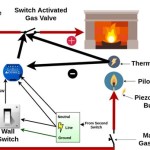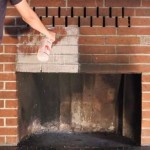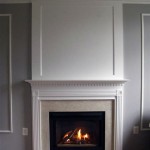Dry Stack Fireplace Stone: A Guide to Building and Design
Dry stack fireplaces, also known as "mortarless" fireplaces, have gained popularity in recent years for their rustic charm and natural aesthetic. They offer a unique and captivating way to add warmth and character to any outdoor living space. Constructed using natural stone pieces stacked without the use of mortar, dry stack fireplaces create a sense of authenticity and connection to the surrounding environment. This article provides a comprehensive guide on dry stack fireplace stone selection, construction techniques, and design considerations.
Selecting the Right Stone for Dry Stack Fireplaces
Choosing the right stone is crucial for the stability and visual appeal of your dry stack fireplace. The ideal stone should be durable, weather-resistant, and have a natural, rustic appearance. Here are some popular choices for dry stack fireplace stone:
- Fieldstone: Irregularly shaped stones found naturally in fields offer a classic, rustic look. They come in various sizes and colors, allowing for a unique and personalized design.
- Flagstone: Flat, rectangular stones with a natural, rugged texture are commonly used for dry stack fireplaces. They create a clean and contemporary look while retaining the rustic appeal.
- Slate: A metamorphic rock known for its durability and distinct layered structure, slate adds a touch of elegance to dry stack fireplaces. It comes in a range of colors, including black, gray, and green.
- Sandstone: A sedimentary rock with a porous texture, sandstone offers a warm, earthy aesthetic. Its natural variations in color and texture create a visually appealing fireplace.
When selecting stones, consider factors such as the availability in your region, budget, and desired aesthetic. Ensure the stones are well-drained and have a consistent thickness for stability.
Construction Techniques for Dry Stack Fireplaces
Building a dry stack fireplace requires meticulous planning and execution. The process involves stacking stones without using mortar, relying on gravity and careful placement for structural integrity. Here are some essential construction techniques:
- Foundation Preparation: Before starting construction, prepare a solid foundation using concrete or gravel. The foundation should be wider than the fireplace base to ensure stability and prevent settling.
- Stone Placement and Tamping: Start stacking stones from the base, carefully selecting and arranging them to create a visually appealing and stable structure. Each stone should be firmly tamped into place to create a secure connection. Utilize a rubber mallet for gentle tapping.
- Firebox Construction: Construct the firebox using fire-rated materials such as firebricks or heat-resistant concrete. The firebox should be contained within the stone structure and have an appropriate vent for smoke and gases.
- Chimney Construction: Build the chimney using stacked stones, ensuring proper venting for smoke and gases. The chimney opening should be large enough to allow for adequate airflow.
- Finishing Touches: Once the fireplace structure is complete, you can add finishing touches such as a mantle or hearth. The final step involves sealing the fireplace to prevent water damage and protect the stone from the elements.
Design Considerations for Dry Stack Fireplaces
The design of a dry stack fireplace offers numerous possibilities to enhance the visual appeal of your outdoor space. Consider these design elements:
- Shape and Size: Determine the shape and size of the fireplace based on your space and needs. Rectangular fireplaces provide a classic look, while curved or circular designs offer a modern and contemporary feel.
- Stone Arrangement: Experiment with different stone patterns and textures to create visual interest. Irregular patterns offer a rustic look, while more structured arrangements can evoke a modern aesthetic.
- Lighting: Incorporating lighting around the fireplace can enhance the ambiance and create a warm and inviting atmosphere, especially in the evenings.
- Surrounding Landscape: Consider the surrounding landscape when designing your fireplace. The stone and overall design should seamlessly blend with the natural environment.
Dry stack fireplaces offer a unique and captivating way to enhance your outdoor living space. By carefully selecting stones, mastering construction techniques, and incorporating creative design elements, you can create a beautiful and functional fireplace that will provide warmth and character for years to come.

Dry Stack Vs Mortar Joints The Cultured Stoners

Sienna Dry Stack I Xl Building S

Dry Stacked Stone Fireplace Design Ideas S Remodel And Decor Fireplaces Wall

Dry Stacked Stone Fireplace Fireplaces Natural Remodel

Dry Stack Stone Veneer Fireplace Traditional Living Room Chicago By Hx Home Solutions And North Star Houzz Ie

Dry Stack Vs Mortar Joints The Cultured Stoners

Dry Stacked Stone Fireplace With Raw Edge Cypress Mantel Fireplaces Surround Corner

How To Update Your Fireplace With Stone Evolution Of Style

How To Build An Outdoor Stacked Stone Fireplace

Dry Stack Stone Fireplaces Superb Craftsmanship Centuries In The Making
Related Posts








